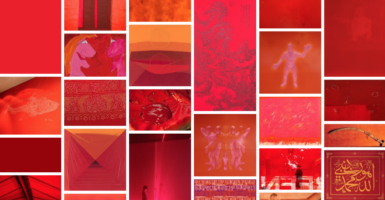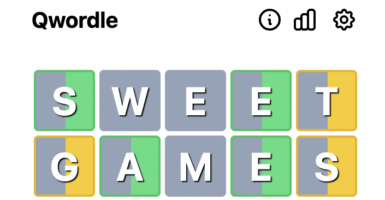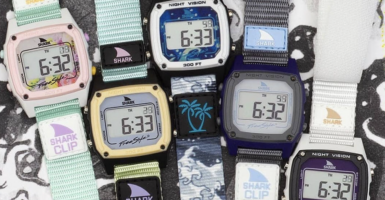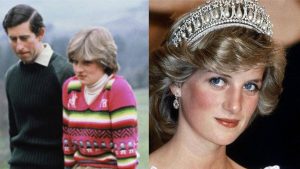These Pics Show The Fashions Of The 1960s
The 1960s marked a transformative and tumultuous decade, a trend that was reflected in the fashions of the time. While the decade started out with the elegant, conservative designs of the 1950s, the end of the decade brought a wave of bright colors and psychedelic designs.
It’s incredible to think that mainstream fashion evolved from plaid skirts to go-go boots, and business suits to birthday suits, in just a ten-year span. Let’s explore this revolutionary decade in fashion.
Bright colors started to emerge in the prior decade.
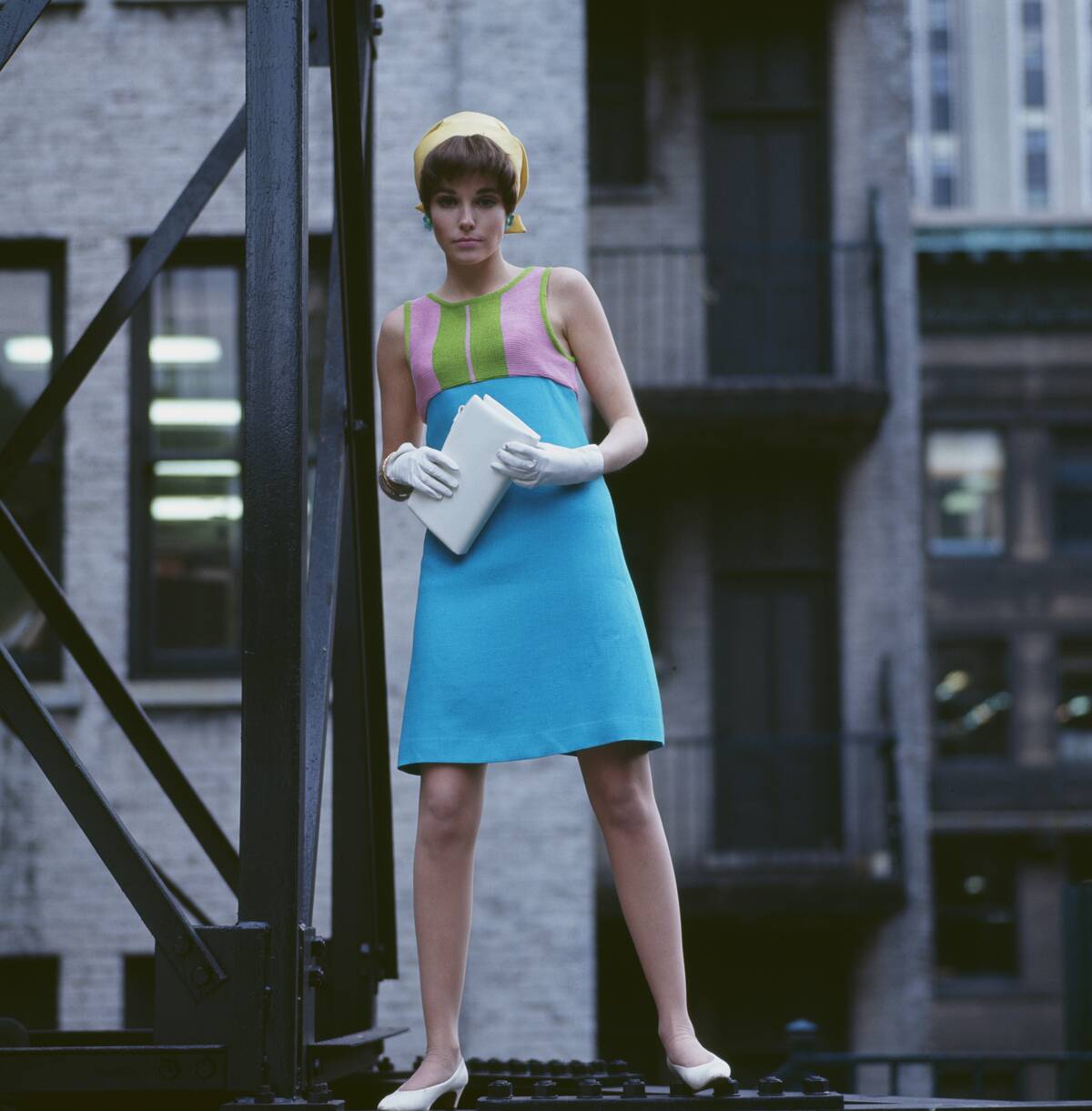
The bright colors on this woman’s dress seem to come from the late 1960s, but this photo was actually taken at the beginning of the decade. That indicates that mainstream fashion was trending toward bright colors before the hippie movement began to take shape.
Of course, bright colors became increasingly fashionable in the 1950s as wartime shortages became a thing of the past, and the public began to demand a change from the dour fashion trends of the 1940s and early ’50s.
Students dressed smartly.
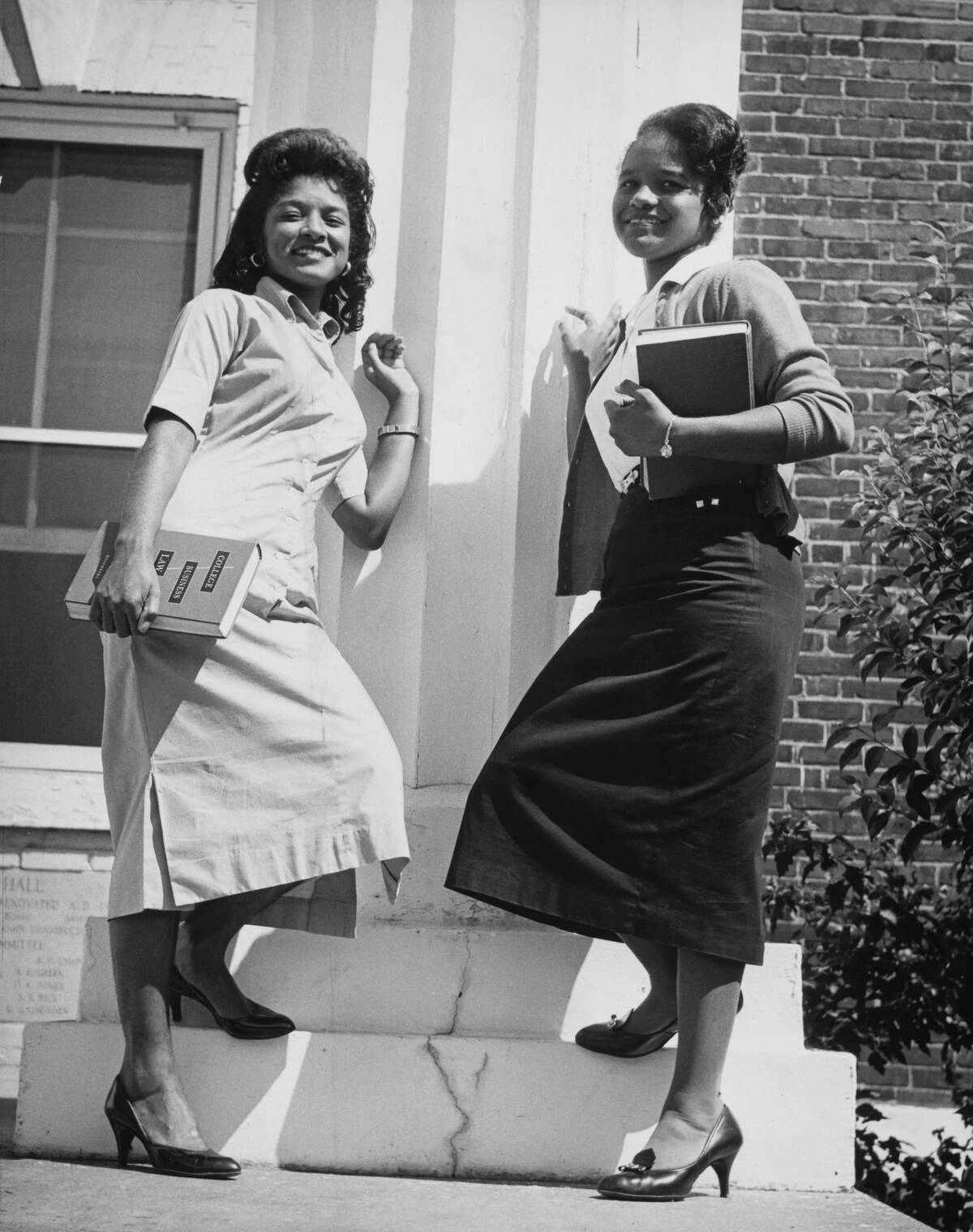
These two young women are seen posing outside Allen University in South Carolina in 1960, showing the conservative dress norms that were still in place early in the decade.
Knee-length (or even lower) skirts and dresses were often worn by female students, complemented with styled hair and sometimes cardigans in cooler climates. Of course, as social norms began to shift, these fashions became largely a thing of the past.
Jackie Kennedy was a style icon.
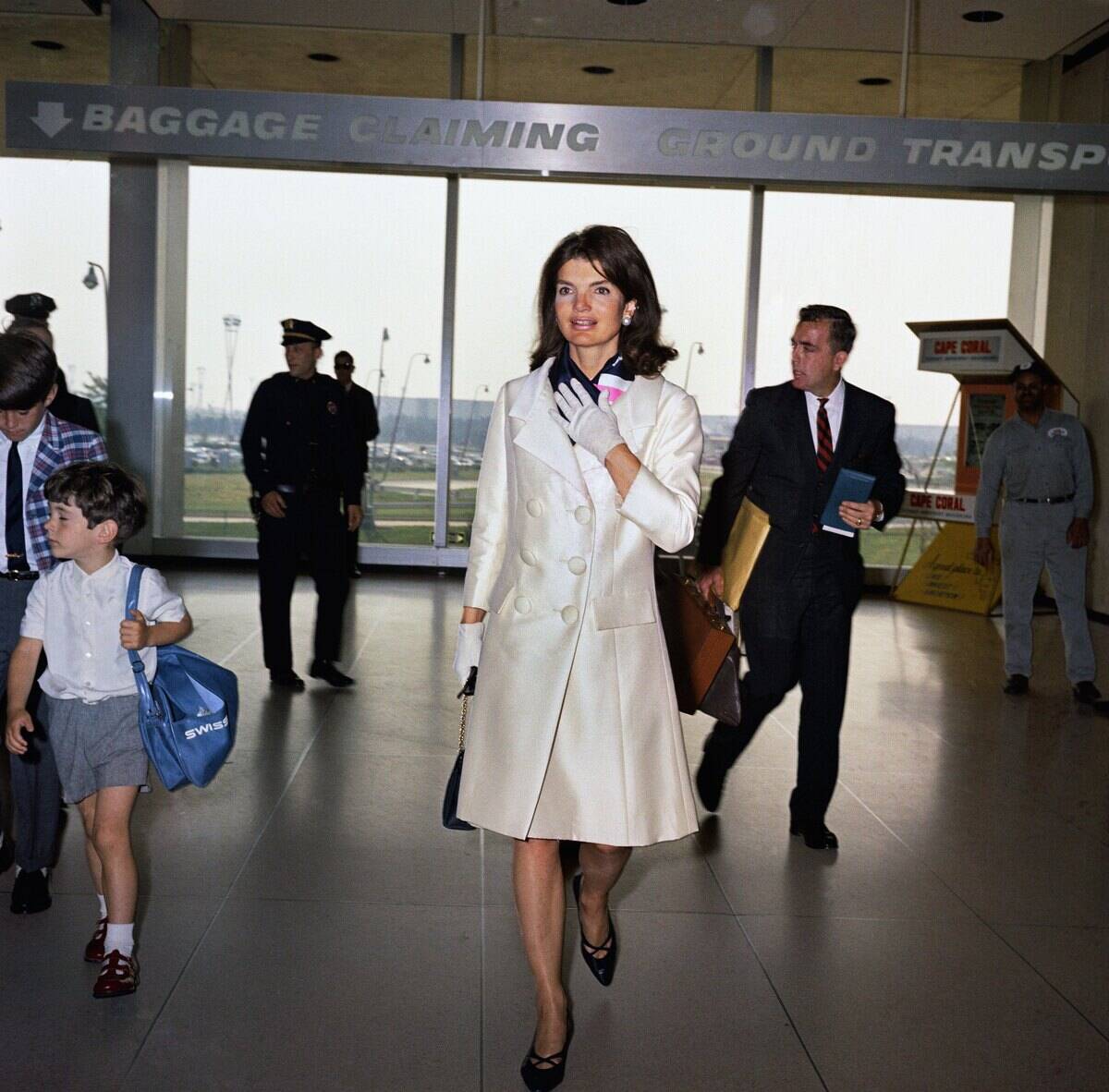
Jacqueline Kennedy, former First Lady of the United States, can be seen in this 1966 photo. Every era needs its style icons, and Kennedy was most certainly viewed as iconic in the early ’60s.
Her fashion sense combined elegant, clean lines, tailored silhouettes, and luxurious fabrics — all styled in a straightforward, modern design. Kennedy’s bouffant hairdo, pillbox hats, and sheath dresses came to symbolize American sophistication and glamour.
A snapshot of family prayers.

This early ’60s image of a family saying grace before dinner offers a candid look at what everyday Americans were wearing during the decade.
While no one is dressed as formally as they would have been in prior decades, it’s worth noting that the father has not changed out of his work suit, and no one is wearing clothes that could be viewed as particularly casual. The patterned designs on the girls’ dresses give a glimpse of a fashion trend that would emerge during the decade.
Younger kids were dressed conservatively.
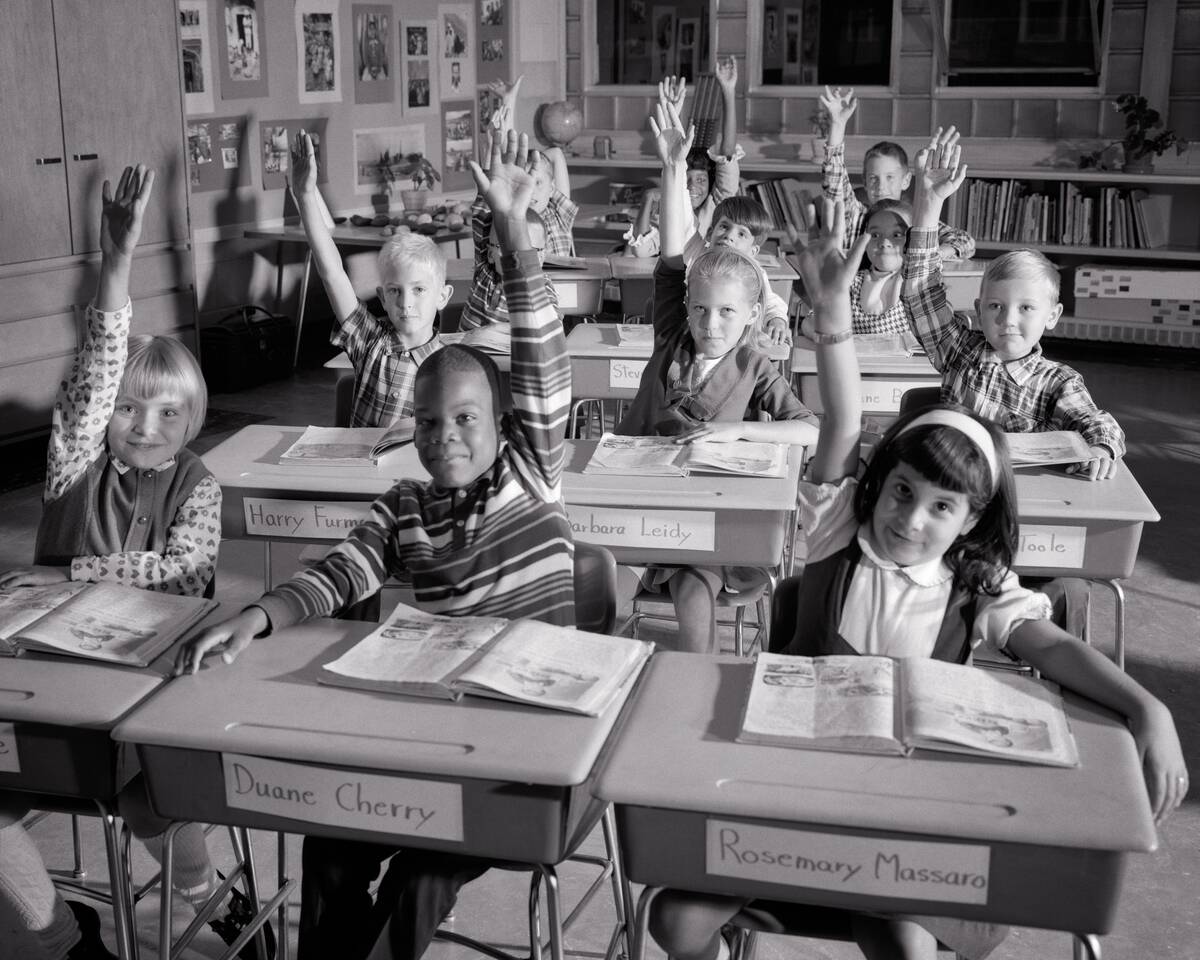
This is a staged image of a 1960s classroom, but it still gives a good idea of what younger American schoolkids were wearing to class in the early ’60s.
Kids were typically dressed in neat, practical clothing, with girls wearing knee-length skirts or dresses and boys in collared shirts or sweaters. Because many families relied on hand-me-downs, it’s safe to say that children’s fashion evolved more slowly.
Men’s fashion was mostly staid.
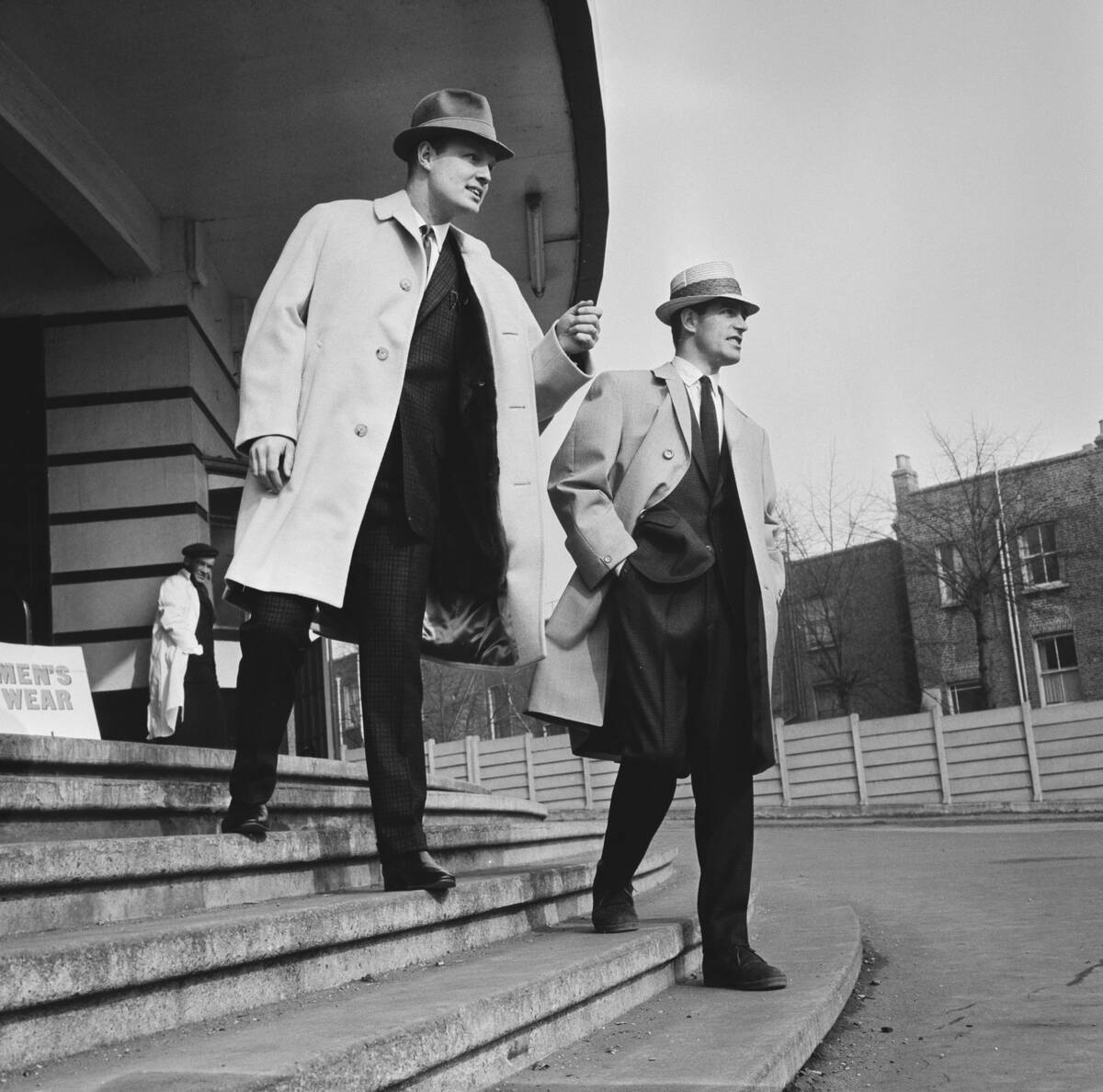
While the 1960s saw some incredible strides in terms of new fashions, it’s safe to say that businessmen of the decade looked much the same as they would in the ’50s or earlier.
The two men in this 1963 photo are wearing top-of-the-line menswear, which should look familiar to anyone who’s watched Mad Men. Bright colors were virtually unheard of, and gray and navy dominated the menswear game. As the decade drew to a close, these styles would gradually become more relaxed and less form-fitting.
Teenagers started to dress down.
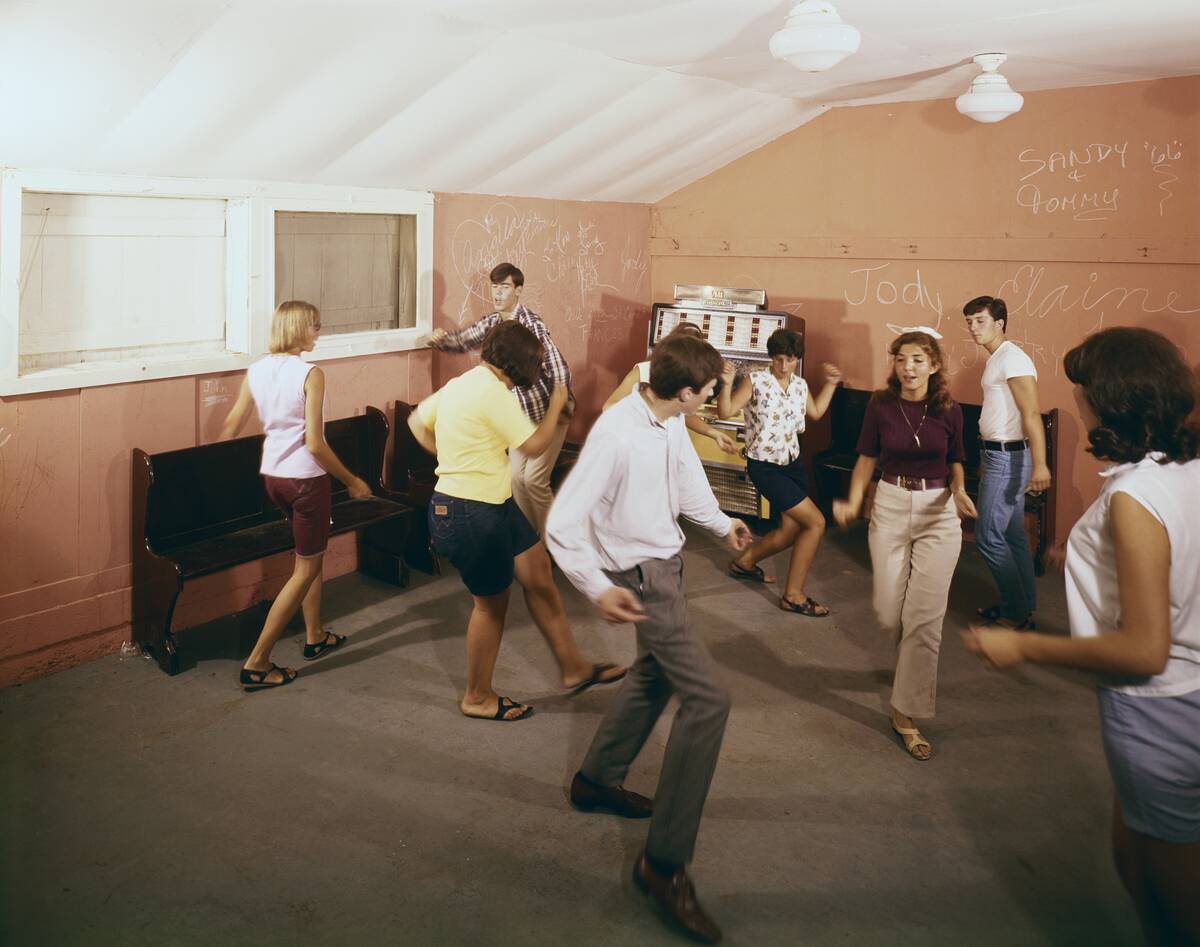
This image of a teen dance gives a glimpse of youthful fashions from earlier in the decade, which tended to favor straightforward designs with collared shirts and slim-cut pants.
While this dance doesn’t show much of the mod or hippie influences that would come to dominate youth fashion earlier in the decade, the longer hairstyles on the boys in the photo give a glimpse of what’s to come.
Women’s fashion became colorful.
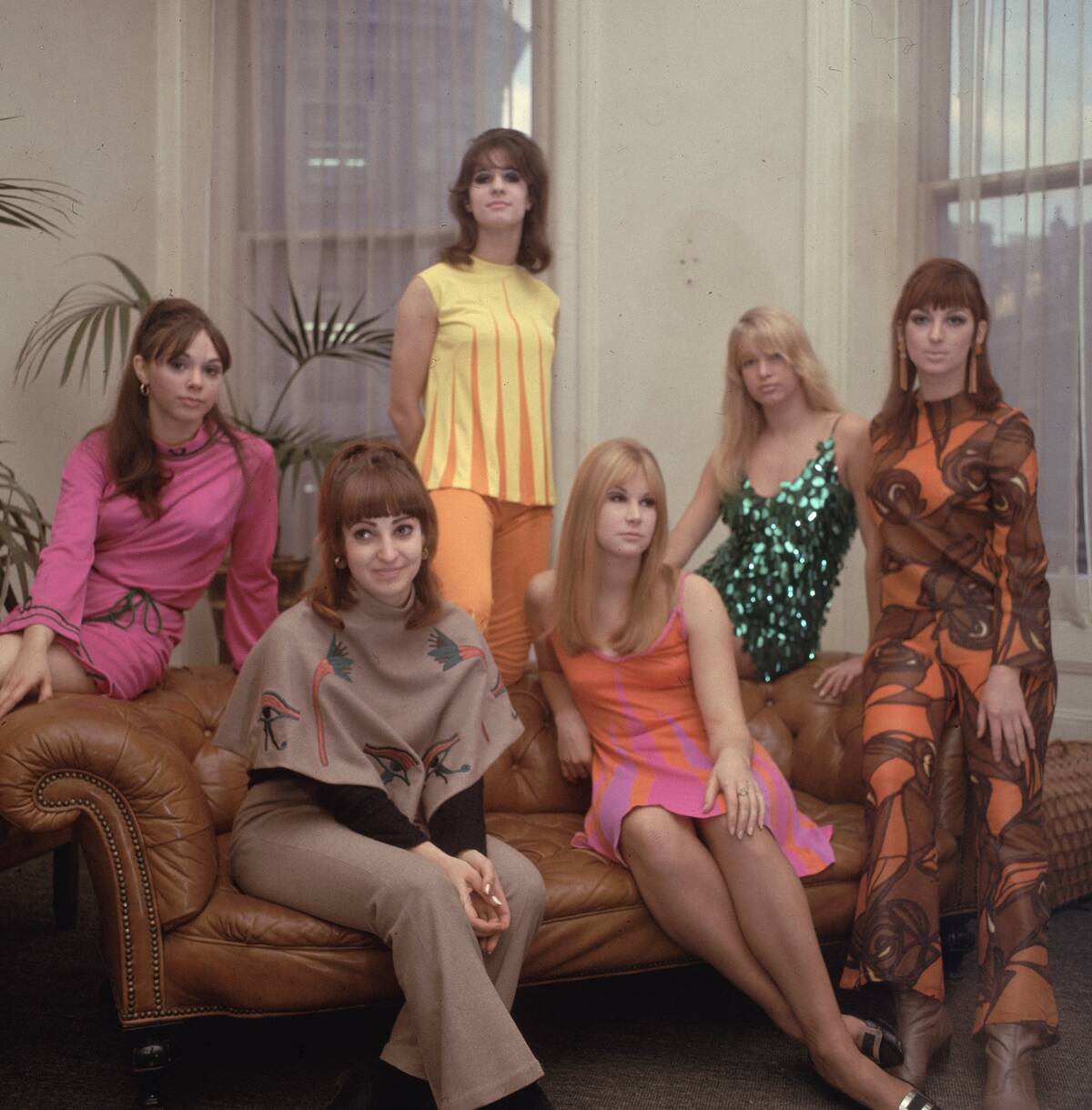
Early in the ’60s, the predominant colors in women’s fashion were typically muted, elegant hues like pink, coral, and powder blue — but by the time this 1966 photo was taken, more vivid colors had started to enter the landscape.
Thanks to the influence of pop art and London’s Mod culture, colors became louder and designs became more complex, with geometric color blocking and whimsical designs.
New technology allowed for more vibrant designs.

The emergence of synthetic fabrics like PVC and polyester allowed clothing manufacturers to make garments that could hold dye better, even after multiple washes, which helps explain the explosion of color later in the decade.
These vivid colors appeared first on women’s fashion, but would creep into men’s fashion more and more as young people adopted the hippie ethos.
Some folks stayed traditional.

Anyone who’s familiar with the disco-era Bee Gees, with their feathered perms and leisure suits, probably wouldn’t recognize this 1967 image of the famous group.
While the members of the band no doubt look dapper in their suits, it’s fair to say that this look was falling out of style by the time this picture was taken. The Bee Gees evidently agreed, as they would adopt a far different style within a few short years.
Others helped to set new trends.
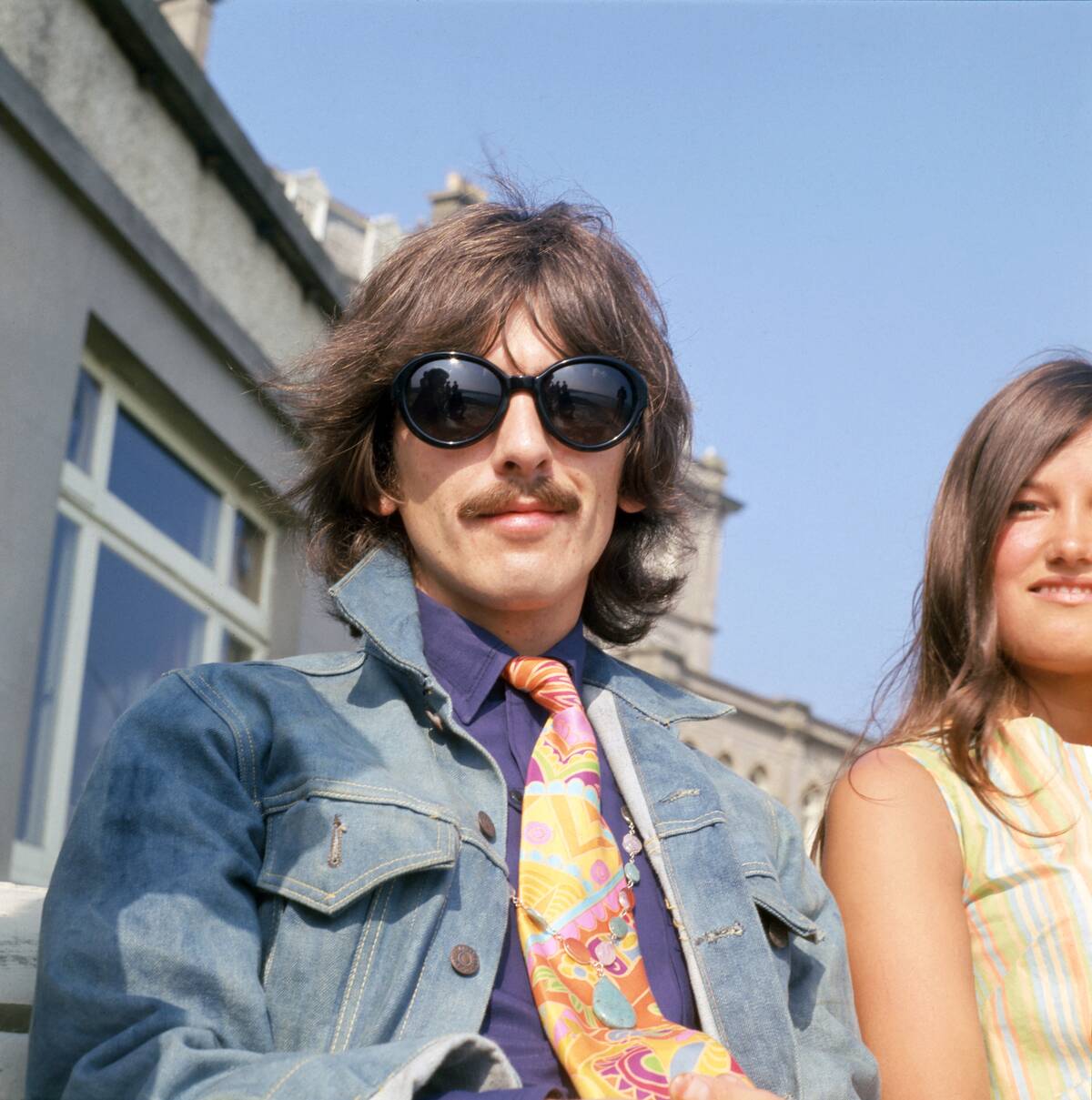
This photo of George Harrison was taken the same year as the Bee Gees image, and illustrates the duality of fashion trends in 1967. Harrison and his fellow Beatles helped to evolve the decade’s aesthetics.
At the time of this photo, Harrison was busy shooting the Magical Mystery Tour film. Artistic expressions like Magical Mystery Tour, Yellow Submarine, and Sgt. Pepper’s Lonely Hearts Club Band were at the forefront of pop culture in the ’60s, and deserve at least some of the credit for the decade’s cultural and stylistic shifts.
Clothes started to feature more graphics.
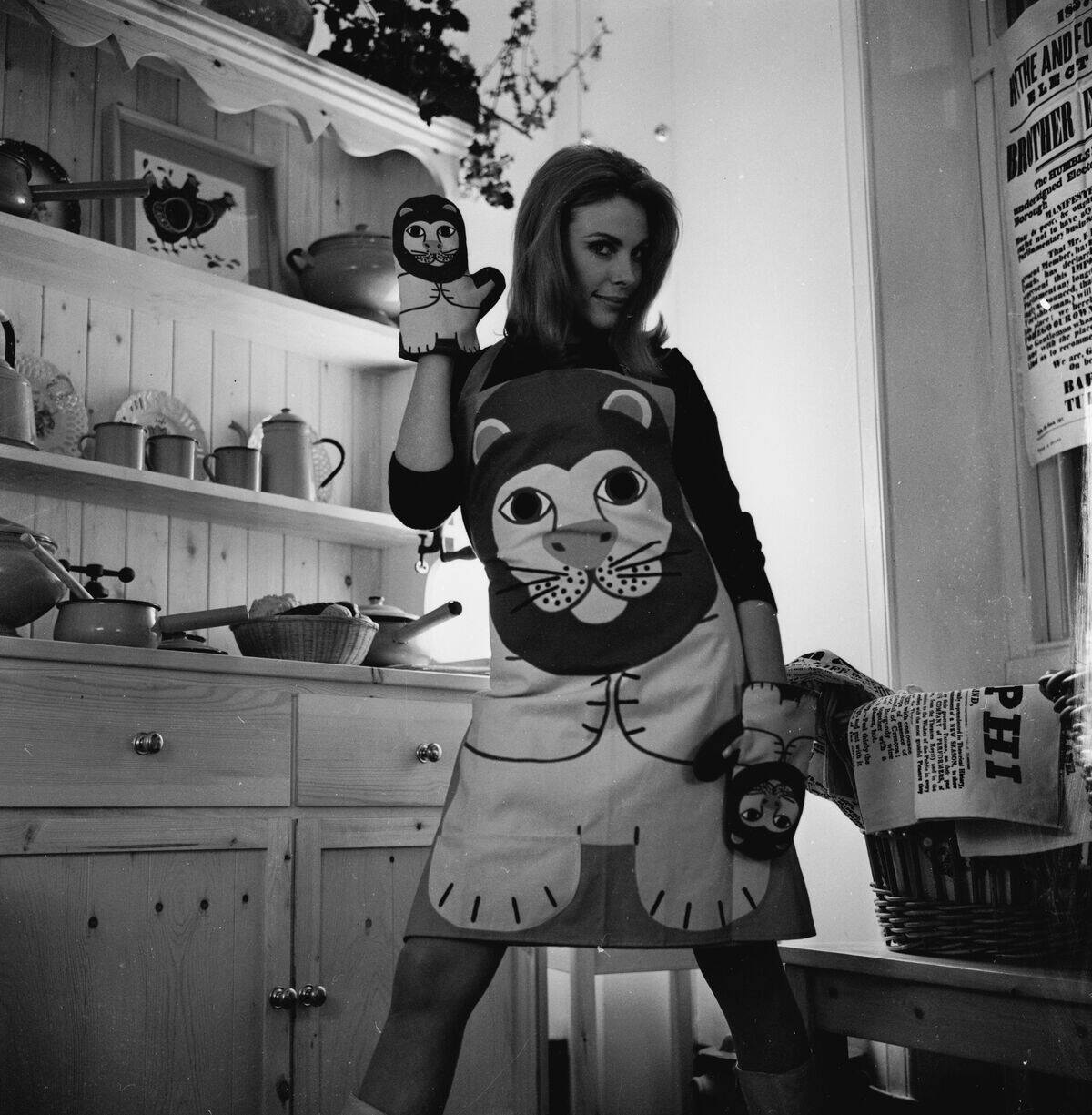
Graphic t-shirts have been around for decades now, but in the 1960s, the practice of putting big, bold graphics on articles of clothing was still in its infancy. While not everyone owned the fun lion-themed apron shown in this picture, the graphic illustrates what might be seen on designs of the era.
The psychedelic movement that would emerge later in the decade also contributed to this trend, with graphics ranging from specific to abstract appearing on clothing.
Things shifted dramatically at the end of the decade.
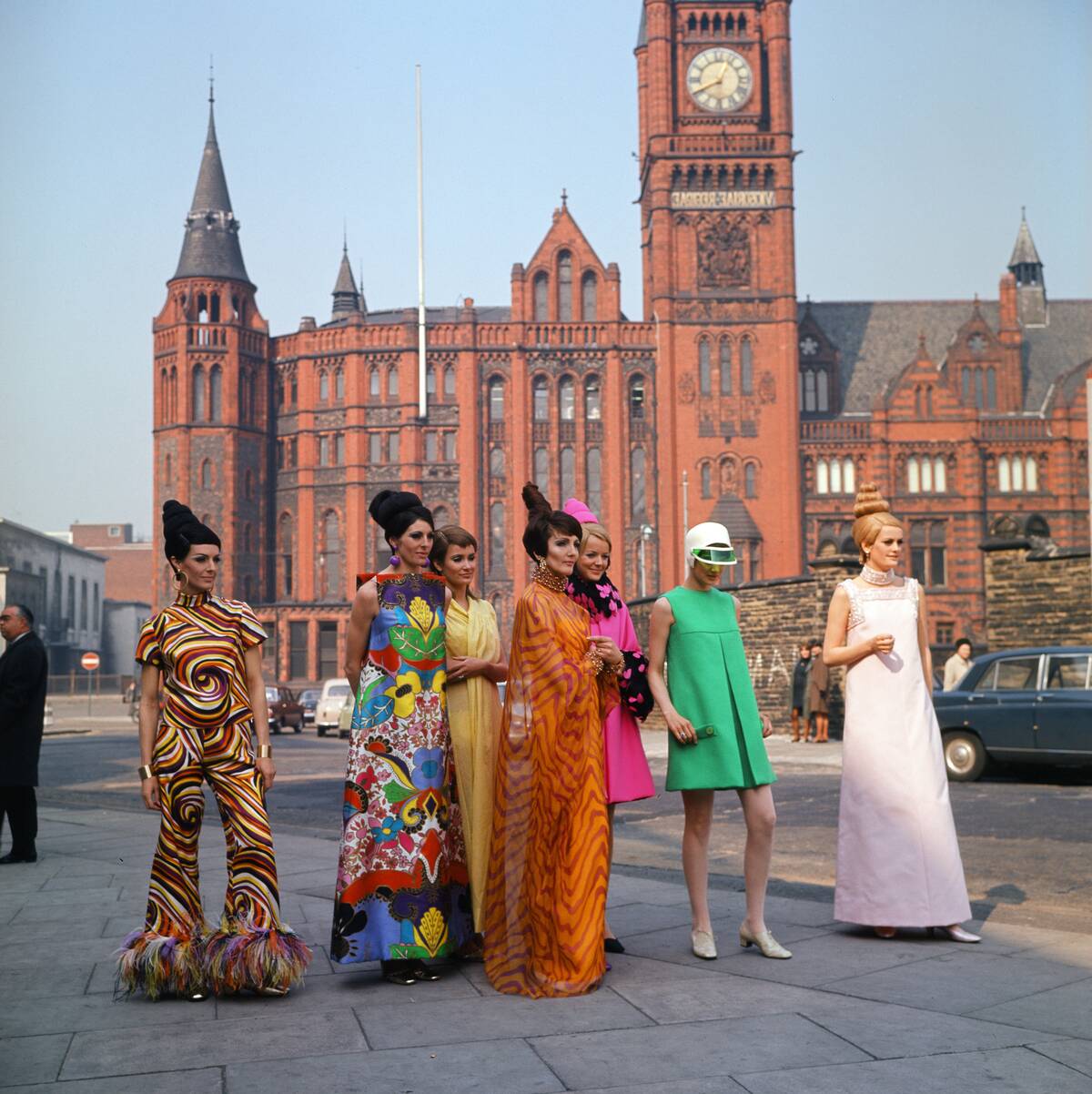
This 1967 photo of a fashion show in Liverpool represents the shifting face of women’s fashion. While the model on the far right is wearing a timeless dress that looks like it came out of the ’50s, everyone else is wearing something far more forward-thinking.
The green and pink dresses show the decade’s preference for garments with a singular, vibrant color, while the designs further to the left show the influence of graphic designs and patterns.
Hippies changed the game.
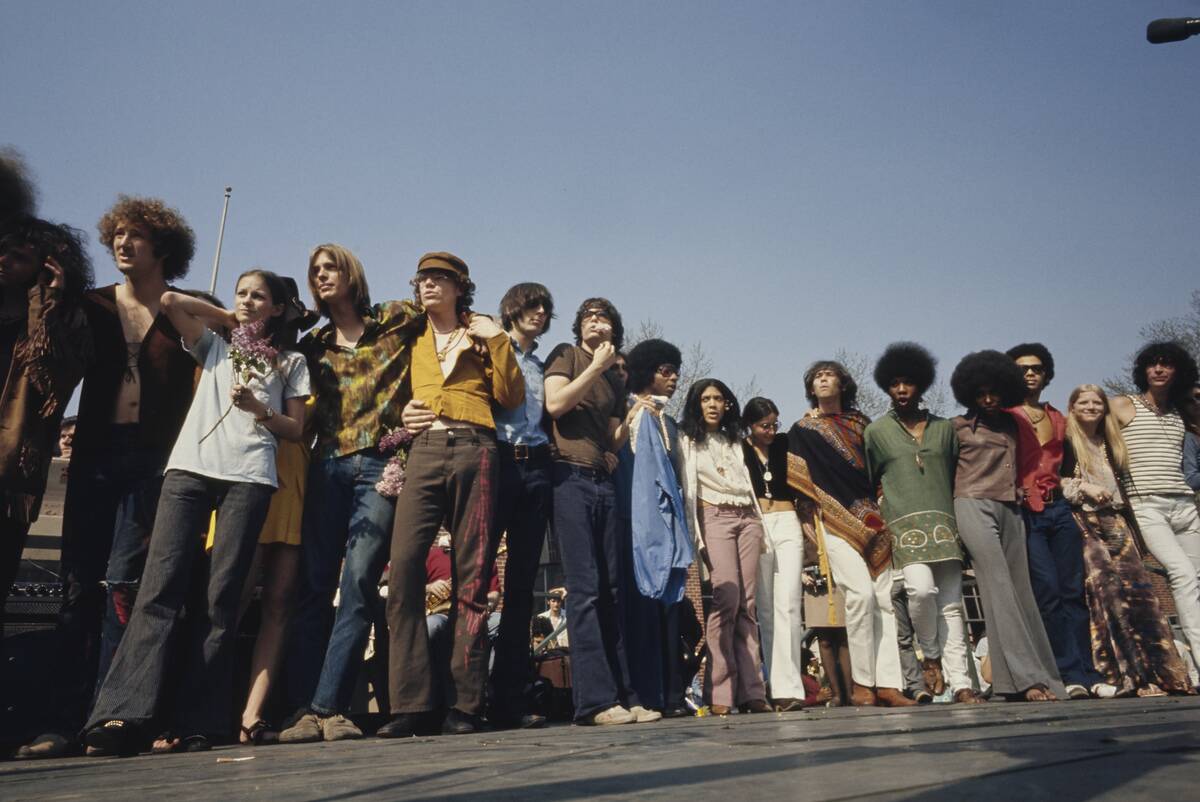
While the hippie movement is generally associated with bright, psychedelic motifs, the reality is that many hippies wore far more muted designs.
This is in part because the countercultural, anti-materialistic ideals of hippies gravitated towards comfort and reusing and repurposing old clothes rather than buying bespoke new designs.
The decade closed with Woodstock.
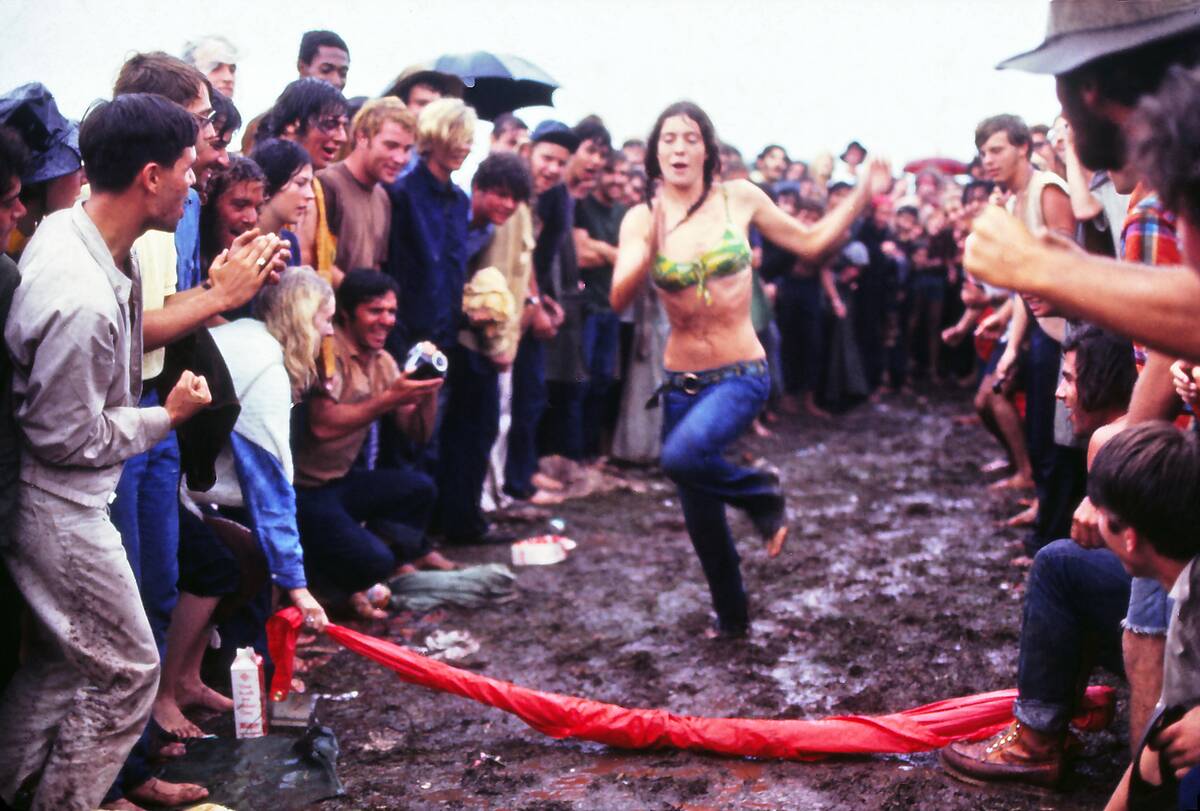
The legendary 1969 Woodstock music festival is viewed as the quintessential hippie moment, and indeed, popular fashions of the era are on full display.
At the same time, Woodstock could be seen as a de-evolution of fashion as much as an evolution, as many attendees didn’t seem to particularly care what they were wearing — or not wearing.
